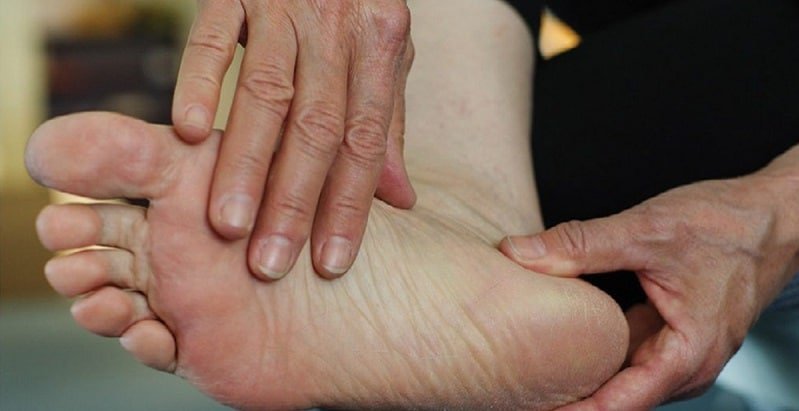What are Diabetic Blisters?
When you are diagnosed with diabetes, you are likely to experience different skin conditions as one of the complications if the disease is not treated well. One of these skin conditions is called diabetic blisters, which is also known as bullosis diabeticorum or diabetic bullae.
Diabetic blisters appear as small to big sizes of skin blisters. They often develop in specific parts of the body, such as the legs, feet, and toes. They also appear on the hands and arms, although only frequent. Compared to other skin infections, diabetic blisters are not usually painfully annoying. They can also be itchy sometimes, but the skin encircling the blisters is not swollen and irritated.
Signs and Symptoms
Similar to other skin conditions, diabetic blisters also have different signs and symptoms. Consider the following:
- Clear bumps on the skin
- Smaller to bigger blisters
- Fluid-filled blisters
- Itchiness on some parts of the skin
- Skin lesions (usually in a cluster)
Note that this skin condition frequently occurs in diabetic individuals who have not controlled or managed their diabetes properly. Furthermore, if diabetic blisters happen, it is usually the first sign that someone has diabetes and their blood sugar levels are abnormally high.
Causes
There is no concrete explanation as to how diabetic blisters occur. The only thing that’s clear is if the body isn’t well taken care of, especially for those who have been diagnosed with diabetes for years. That is also the reason why monitoring the blood sugar levels, administering insulin injections, and taking the right diabetes medications are a must to ensure that other health complications do not occur.
The following are also the factors enabling blisters to occur.
- Wearing shoes that is very small to the feet
- Abnormal blood circulation
- Fungal infection
- Injuries in either the feet and hands
In terms of gender, more men tend to develop diabetic blisters compared to women. The reason is unclear. But to prevent the condition from happening, keeping yourself healthy and taking medicines regularly are the right things to do.
Diabetic Blisters Treatment
Thankfully, diabetes blisters on feet aren’t chronic. That includes healing time that spans from 2 to 5 weeks without concrete treatment. The treatment process for this skin concern aims to prevent the condition or illness. Just like other skin blisters or sores, bursting or puncturing them isn’t recommended.
As mentioned, diabetic blisters are not painful. However, if these blisters cause inflammation and pain, medical experts have recommended doing the following:
- Cold or warm compress. Doing this will relieve that itchiness sensation on the skin.
- Using band air or any type of bandaging. Doing this will protect and prevent the blisters from breaking or bursting.
- Applying topical creams. Correlative to other skin infections, topical creams are a great help in alleviating signs of inflammation and irritation.
Note that some of the recommendations here can be performed at home. That means that you can do these easy steps in the comfort of your own stead. However, if the infection cannot be controlled anymore, consult immediate medical attention.
Prevention
The only way to prevent different health complications from occurring is by managing the main medical condition properly. That means controlling or treating the source of these health complications. In terms of diabetic blisters, keeping the blood glucose condition at a normal state is necessary.
In treating diabetes, part of the process is monitoring the levels and consuming the right medications. Aside from that, observing a proper diet and practicing healthy exercises are also the new lifestyle that diabetic individuals need to observe.
Mastering diabetes is easy. Do the following:
- Aside from monitoring your blood sugar levels, also inspect your skin daily.
- Always wear socks when going on a hike or jog for your daily exercise. Ensure that your feet will not get any skin injury.
- Wounds can also cause blisters and sores. Make sure that you do not hurt yourself by using sharp objects, such as scissors and knives.
- When going outdoors, protect your skin by using sunscreens.
Of all these measures, what is considered the most important is regularly visiting your doctor for your regular checkup and following your daily prescription strictly. By doing these, you are guaranteed to be safe all the time and will not experience any health complications.
{
“@context”: “https://schema.org”,
“@type”: “BlogPosting”,
“mainEntityOfPage”: {
“@type”: “WebPage”,
“@id”: “https://canadianinsulin.com/articles/diabetic-blisters/”
},
“headline”: “Diabetic Blisters: Symptoms, Causes, Treatment and Prevention”,
“description”: “Diabetic blisters appear as small to big sizes of skin blisters. They often develop in specific parts of the body, such as the legs, feet, and toes.”,
“image”: “https://canadianinsulin.com/wp-content/uploads/2021/09/diabetic-blisters.jpg”,
“author”: {
“@type”: “Organization”,
“name”: “Canadian Insulin”
},
“publisher”: {
“@type”: “Organization”,
“name”: “canadianinsulin.com”,
“logo”: {
“@type”: “ImageObject”,
“url”: “https://canadianinsulin.com/wp-content/uploads/2021/03/cdi_logo_header.png”
}
},
“datePublished”: “2021-09-21”,
“dateModified”: “2021-09-21”
}


